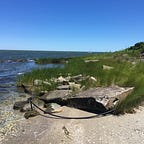Why You Probably Shouldn’t Be Worried About the Supervolcano Beneath Yellowstone
 For those unfamiliar, Yellowstone, the nation’s oldest and second most visited national park (3.8 million visitors in 2020), has a super-volcano beneath its surface. A super-volcano is a volcano with an eruption of a magnitude of eight on the VEI scale, which stands for Volcanic Explosivity Index. For reference, a volcano of this magnitude would erupt deposits measuring 240 cubic miles, or 1,000 cubic kilometers.
For those unfamiliar, Yellowstone, the nation’s oldest and second most visited national park (3.8 million visitors in 2020), has a super-volcano beneath its surface. A super-volcano is a volcano with an eruption of a magnitude of eight on the VEI scale, which stands for Volcanic Explosivity Index. For reference, a volcano of this magnitude would erupt deposits measuring 240 cubic miles, or 1,000 cubic kilometers.
Between 2.1 million and 640,000 years ago, there have been three eruptions resulting in the formation of calderas, a large depression resulting from the eruption and collapse of a volcano. The giant caldera at Yellowstone is 80 kilometers long, 65 kilometers wide, and hundreds of meters deep. That’s a lot of square footage and it’s startling to imagine nearly four million people each year walking above a gigantic volcanic crater on their family vacation.
A recent study modeled the ash distribution if Yellowstone’s super-volcano were to erupt. Super-volcanoes distribute ash in a unique pattern that the USGS describes as a “powerful umbrella…
